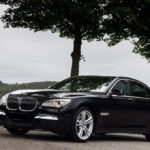Do Automatic Cars Use More Fuel? (Comparison)
Automatic transmissions have been very infamous for being less fuel-efficient.
A statement that was true a decade ago, is not the general opinion anymore. After all, automatics today are way more fuel-efficient than before. But are they better than manuals? Or do automatic cars use more fuel?
Do Automatic Cars Use More Fuel than Manual Cars?
Automatic cars used to be less fuel-efficient than manual transmissions. However, today, most automatics are as efficient as a manual transmission. Rather, the fuel efficiency in the modern-day is majorly impacted by the driver over anything else.
Automatics were less efficient than manuals, about a decade ago. Back then, even with 6-speed automatics, manuals were more fuel-efficient and driver-friendly.
But as automatics got more refined, their efficiency kept improving, to the point where 96% of cars sold in the US are automatics. With over 6-7 transmission gears in automatic, they are able to swiftly switch between gears at lower RPMs, saving unwanted fuel.
Since most automatic cars today also have driving modes, the shifts are monitored and controlled electronically. Based on the modes, the car adjusts engine output and controls the transmission to get the best fuel or power output required.
That being said, not all automatics are as efficient. Among many automatic systems, CVT is considered the most efficient, followed by DCT. AMT is among the least efficient automatic transmission along with torque converters.
But even modern-day torque converters are known to provide similar fuel economy as manual counterparts. Most manual cars today have alternatives for DCT, CVT, or Torque Converters. And their fuel efficiency is decided by the way you drive instead of the type of transmission you use.
Also read: 10 Horrible Disadvantages of Automatic Cars
Why Do Automatic Cars Use More Fuel?
The reason why automatic uses more fuel is due to high rpm gear shifts and slips caused by the torque converter. Both of which were a waste of fuel.
The earlier automatic technology used a torque converter to perform automatic shifts. They also only had few gears, generally 3-4, so gear changes would have higher rpm, where the engine was disengaged to rev at higher, while the next gear is selected.
The torque converter worked like a clutch, which basically caused ‘slip’, decoupling the transmission from the engine, to prevent it from stalling. So, every time you stopped, your engine would be running at some power, but the car would not move as it was decoupled from the drivetrain.
Trending Video: How to Easily Bring Back to Life any Old Car Battery and Save Tons of Money (click to watch)
With the older automatics, there was a constant percentage of slippage happening all the time. The limited number of gears also only allowed the transmission to change a few times. Meaning the engine would run at a single gear for a longer time span and higher rpm. The extra load with power loss due to slippage caused the automatic transmission to waste more fuel.
But after locking torque converters were introduced, the slip was eliminated. With additional gears and an electronic gear selector, the efficiency and precision of automatics were boosted. Making automatics as efficient as manual.
Automatic vs Manual Cars- Fuel Consumption Comparison
While there aren’t many manual cars left to compare from, certain brands like Honda, Ford, Chevy do offer a few cars with both alternatives.
The Honda Civic Sport for one comes with both automatic and manual transmission. You can either choose a 6-speed manual or a CVT. The manual has a claimed mileage of 25 MPG / 36 MPG in city/highway whereas the CVT offers 29 MPG/37 MPG in city/highway.
Both of which have combined mileage of 31mpg and 33 MPG respectively. If we assume that you drive 13,500 miles/year with the average gas rate at $3 per gallon, then you would pay $79 more in fuel for a manual annually.
Similarly, the Ford Mustang with a 6-speed manual has a combined mileage of 24 MPG for the base 2.3L variant, while the 10-speed automatic offers 25mpg for the same. So, if you compare the fuel expenses, you are again paying $67 ($1687- $1620) more for a manual annually.
The 2021 Jeep Wrangler 4dr 4WD also has the manual transmission variant beat in fuel efficiency. The 3.6L variant offers 20 MPG in automatic and 19 MPG in manual. Costing $106 ($2,131 -$2,025) extra in fuel charges annually for a manual transmission.
The only cars where the manual has better fuel efficiency than automatic are the used cars, mainly for the models before 2015.
Also read: Manual or Automatic- which Transmission Last Longer?
Is it Possible to Save Fuel in Automatic Cars?
Cars with automatic transmission combined with modern-day EcoBoost or hybrid powertrain are already quite efficient. But the efficiency still is greatly varied by a few physical factors that are controlled by the driver.
It’s possible to save fuel in automatic cars by driving gently, practicing cruising, and scheduling maintenance.
Driving Gently: It’s very obvious that the harder or rougher you drive, the more fuel you use. So driving gently, with smooth acceleration, slow braking would help you save fuel.
Driving mostly in eco/urban mode will also help you get the best fuel efficiency possible. Features like auto on/off are also added in most cars to save fuel at a red light or traffic.
Practice Cruising: Cruise control is one feature designed to help to drive on highways, but it also helps you save fuel. By maintaining vehicle pace, the engine runs at one particular speed for a longer duration. Even in acceleration, the process is kept linear with very little load on the engine.
Scheduled Maintenance: For any vehicle manual or automatic, maintenance is the most important factor even for fuel economy. After all, the smoother your engine runs, the less fuel it will burn. Even a rougher transmission would put stress on the engine, which in turn would increase fuel economy.
Practicing scheduled maintenance and maintaining fluid levels would allow both engine and transmission to always perform optimally.
Also read: Are Black Cars Hard to Keep Clean? (No, if You do This!)
Are Automatic Cars Getting More Fuel-Efficient?
Yes, automatic cars today are more fuel-efficient than ever. For example, a 2021 Civic automatic offers a combined mileage of 33 MPG while the same Civic in 2001 offered 29 MPG.
The past two decades of development in the automotive industry have really pushed automatic technology. From using highly inefficient torque converters to modern-day AMT and iMT tech, the automatic transmission has come so far.
Manufacturers first eliminated all the general flaws by introducing a locking torque converter and adding more gears. Moving up from average 4-speed to 8-10 speed automatics. This greatly reduced the engine load and extra wastage.
The addition of transmission control paired with ECU improved transmission accuracy and control. Allowing manufacturers to bring in driving modes. The eco-mode, for example, makes the transmission shift faster, boosting the fuel economy by 5%.
Ford’s Ecoboost, VW’s TSI, and TDI along with the introduction of hybrid powerhouses also pushed the modern-day engines to be smaller and highly efficient. Which when combined with modern-day automatic transmission creates extremely fuel-efficient cars.
So much so that any mid-range family car equipped with automatic transmission offers a mileage of 25-30 MPG. Add hybrid powertrain, and it goes up to 60 MPG. Proving that automatic transmissions are as efficient as a manual.






